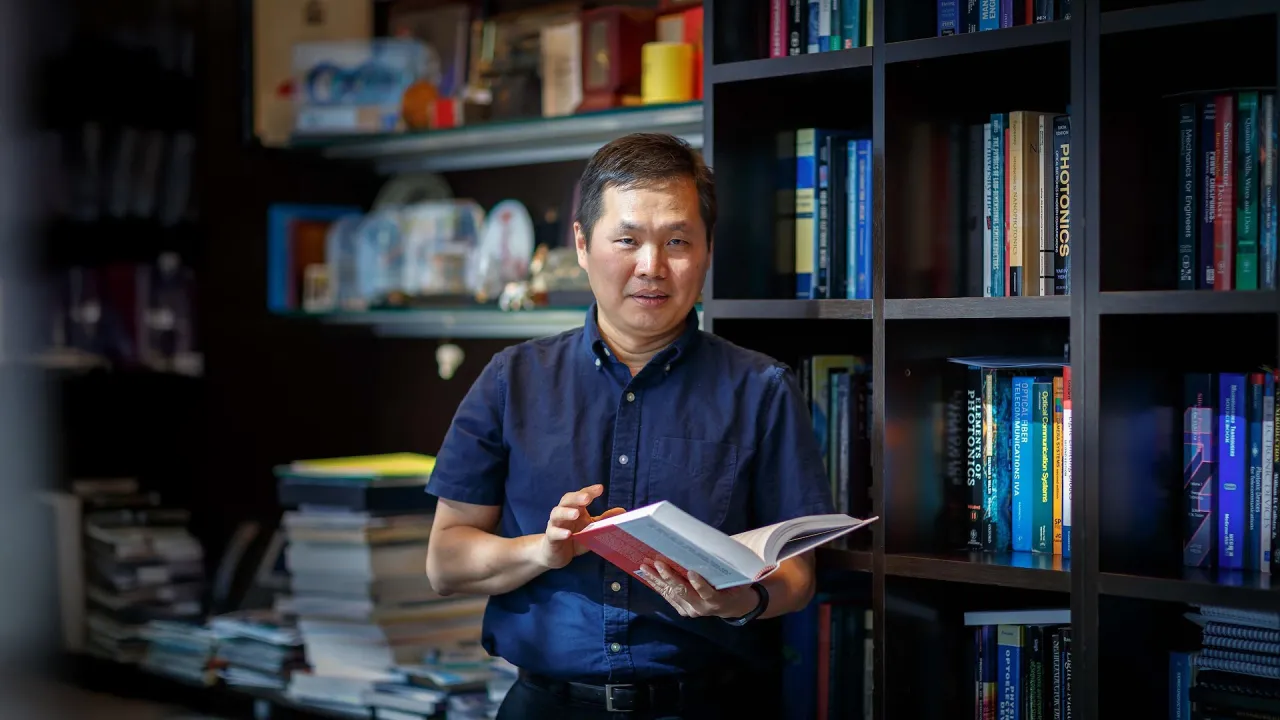
CEMSE’s Professor Boon Ooi appointed Fellow of the Optical Society of America (OSA)
Boon Ooi, Professor of Electrical Engineering and Director of the KACST - Technology Innovation Center for Solid-State Lighting, under the Computer, Electrical and Mathematical Sciences and Engineering Division of KAUST, was recently appointed Fellow of the Optical Society of America (OSA).
About
"It is a great privilege. I owe this recognition to my students, supportive colleagues, collaborators, and mentors," Professor Boon Ooi commented on receiving his recognition as a Fellow of the Optical Society of America (OSA) for 2018.
Ooi is Professor of Electrical Engineering and also is the Director of the KACST - Technology Innovation Center for Solid-State Lighting, under the Computer, Electrical and Mathematical Sciences and Engineering Division of KAUST. The OSA recognized his pioneering contributions to optoelectronic device technologies, particularly in light emitting devices in visible wavelengths, and their applications to lighting and optical communications.
Founded in 1916, OSA is the leading professional organization for scientists, engineers, students and business leaders who fuel discoveries, shape real-life applications and accelerate achievements in the science of light.
With more than a twenty-year long experience in the field, Prof. Ooi has been recognized for the impactful research on visible laser technology developed at his Photonics Lab in CEMSE. Latest contributions include novel applications in high bite rate underwater optical wireless communications for timely and efficient environmental monitoring for oil exploration and prevention of natural hazard.
"The state-of-the-art Core Labs facilities at KAUST have allowed my group to achieve our research goals within a short period. The solution-based approach of the CEMSE Division is truly inspirational and the greatest ally to make a real-world change for current and future generations,” Ooi added.
Ooi joined KAUST in 2009 as one of the Division's founders. His expertise in optoelectronics and photonics began while doing a Ph.D. from the University of Glasgow, U.K. He was an Assistant Professor at Nanyang Technology University (NTU), Singapore (1996-2000). He co-founded a photonics startup in California which he served as a VP for technology development for four years before joining Lehigh University, Pennsylvania, as a faculty member in 2003. He is also a fellow of the International society for optics and Photonics (SPIE) and is a fellow of the Institute of Physics, London.
Questioned about his future research goals, he said: “I will continue to focus on energy efficient light emitting devices and to collaborate with colleagues in KAUST to develop high bitrate systems for both free space and underwater communications.”
By Francesca Serra
